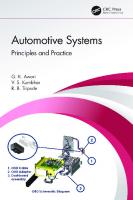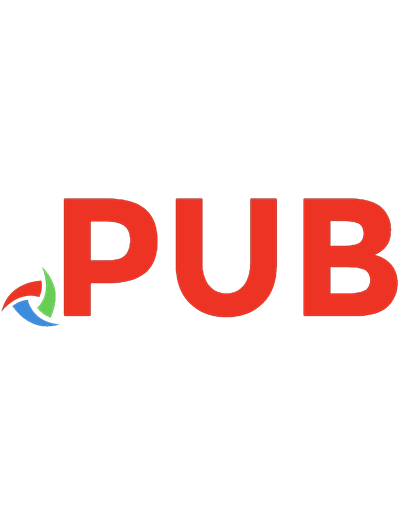Automotive Audits: Principles and Practices [1 ed.] 0367696592, 9780367696597
This book addresses the essentials of an automotive audit which is required by all automotive suppliers world-wide. They
672 158 5MB
English Pages 206 [207] Year 2021
Table of contents :
Cover
Half Title
Series Page
Title Page
Copyright Page
Dedication
Table of Contents
Preface
List of Figures
List of Tables
Acknowledgments
Author
Introduction
Chapter 1 Legitimate Concerns about Audits
Chapter 2 Preassessment Preparation
A Typical Internal Preassessment Survey
Chapter 3 Risk Consideration in Audits
Risk
Risk Identification
Risk Analysis
Risk Evaluation
Risk Control
Risk Communication
Risk Review
Methods and Tools Used in Risk Management
Basic Risk Management Facilitation Methods
Failure Mode Effects Analysis (FMEA)
Failure Mode, Effects, and Criticality Analysis (FMECA)
Fault Tree Analysis (FTA)
Hazard Analysis and Critical Control Points (HACCP)
Hazard Operability Analysis (HAZOP)
Preliminary Hazard Analysis (PHA)
Risk Ranking and Filtering
Supporting Statistical Tools
Chapter 4 Audits
Overview
Assessment Methods
Who Is Involved in an Audit?
Auditor
Lead Auditors
Client and Auditee
Registrar
Types of Audits
Internal Audits (Self-Audits)
Second-Party Audits (Customer Audits the Supplier)
Third-Party Assessment (A Third Party Audits the Organization’s QMS)
Audit Planning
Audit Criteria
Audit Findings
Audit Schedule
Process for Developing Compliance
Starting
Documenting
Evaluating
Audit Process
Phase 1 – Preparation
Phase 2 – Performance
Phase 3 – Reporting
Phase 4 – Closure
Surveillance
Common Problems in Conducting Audits
A Guide to the Guide
Communications
Cost of Quality and Liability
Internal versus External Auditors
Certification versus Noncertification of Auditors
Ethics
Recommendations for Improving Ethical Practices
Conformance versus Compliance
Verification versus Validation
The Role of the Consultant in the Documentation and Preassessment Stages
Chapter 5 Mandatory Auditing Items
An Overview of the Mandatory Documents and Records Required by ISO 9001:2015
Non-mandatory Documents
The Detailed Mandatory Documents Required by ISO 9001:2015 Are
A Guide to the Non-mandatory Documentation
The Detailed Mandatory Documents Required by ISO 14001:2015 Are
Non-mandatory Documents
The Detailed Mandatory Documents Required by OH&S 18001 Are
Mandatory Records
Additional Documentation
The Detailed Mandatory Documents Required by ISO 45001:2015 Are
Mandatory Records
Non-mandatory Documents (Procedures)
The Detailed Mandatory Documents and Records Required by IATF 16949: 2016 Are
Chapter 6 Acronyms
Chapter 7 Methodologies/Tools That the Auditor Should Be Familiar With
Value Stream Mapping (VSM)
What You Need to Get Started
Value Stream Mapping Symbols
Seven Steps to Value Stream Mapping
Conclusion
Operational Excellence versus Continuous Improvement
Operational Excellence – Some Basic Principles
Common and Powerful Operational Excellence Methodologies
Lean Manufacturing
Six Sigma
SIPOC Model
Kaizen
Achieving Operational Excellence (AOE)
Steps in Optimizing Business Process Reengineering (BPR)
Define and Plan the Program
Designing and Developing the Product
Aligning Manufacturing Processes for Customer Satisfaction
Finally, It’s Time for Product and Process Validation
Assessment and Corrective Action
Prevention and Diffusion
PEST and SWOT Analysis
Turtle Diagram
Visual Factory
5S Methodology
Variety of Applications
Mistake Proofing
Role of the Auditor in the Mentioned Methodologies
Chapter 8 Performance beyond Specifications
Audit Roles
Chapter 9 Quick View of Auditing
Supplier Quality – Beyond the Minimum Requirements
Performance to and Beyond Specification Requirements – Quality
Delivery Performance Including Support of Small Lot Manufacturing – Delivery
Capability to Continually Reduce Costs throughout the Supply Chain – Cost
Ability to Respond Rapidly to New Demands, Products, and Issues – Responsiveness
Supply Chain Principles
Supply Chain Strategy
Core QMS Requirements Are Captured In
Avoiding the Most Common Problems in Supplier Sourcing
Supplier Development and Improvement
Complaint Handling
A Typical QMS Audit
Requirements Pass-Down
Penalties and Debits
Integrated Launch Planning
FMEA Training and Consulting
Supplier Certification
Joint Problem-Solving
Value Chain Mapping
Value Analysis (VA)
Supplier Certification Programs
Approved Supplier
Certified Supplier
Criteria for Qualified Supplier
Criteria for Preferred Supplier
Candidates for Supplier Certification and Preferred Status
Make Allowances for New Materials and Parts
Certification Maintenance
Decertification Process
Chapter 10 Process Approach to Auditing
Process Audit
What Is a Process Audit?
Auditing by Element
Auditing by Process
Layered Process Audits (LPAs)
Challenges of Layered Process Audit Implementation
Error Proofing Audits
What Is an Error?
What Does the Standard Require?
How Do We Error Proof?
Corrective Action Audits
Distance Audit
Internal System Audit
Epilogue
References
![Automotive Audits: Principles and Practices [1 ed.]
0367696592, 9780367696597](https://dokumen.pub/img/200x200/automotive-audits-principles-and-practices-1nbsped-0367696592-9780367696597.jpg)









